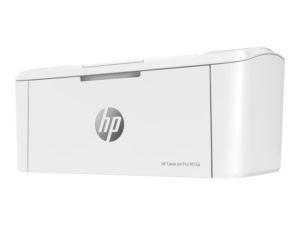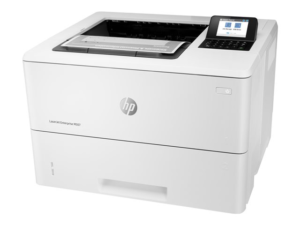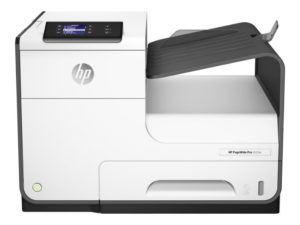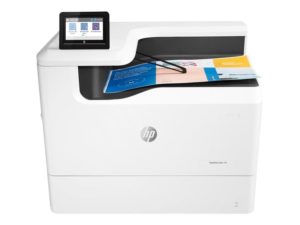Your Quick Guide To Home Office Desktop Printers
Buying a new home office desktop printer can be a bit daunting (and let’s face it – uninteresting) for most people. There are so many different printer types, specifications, and options available and to be honest this probably wasn’t even on your radar until you started working from home. The fact is that unless you know exactly what you’re looking for and why, you could end up going around in circles.
Here we give you the breakdown you need so you can avoid closing your eyes and sticking a pin in it.
1. Speed & Volume:
Are you going to be printing a few one- and two-page documents for the most part or will you need to print lots of large proposals, brochures or presentations? If it’s the latter, then speed will be an issue – look at the pages per minute (ppm) number to determine how fast the output is. As a general rule of thumb, anything up to 20ppm is fairly slow but fine for single page or double page documents. And this will be reflected in the price. 20 – 39 ppm is about average and anything over 40ppm is considered fast. Colour printing will always take a bit longer – generally the ppm number is for comparison between models and is based on printing one A4 page in black and white.
2. Mono VS Colour
Going monochrome will definitely knock a bit off the price but you have to ask yourself what you’re going to be printing. If you want to be able to print decent quality presentations, leaflets, flyers, or newsletters then colour is a must.
3. Printer Type:
For any marketing materials that include graphics or images, opt for inkjet over laser. Inkjet will always print higher quality graphics. Laser printers produce better quality text-based documents. Functionality does overlap though so base this on key features and whatever type of documents you are likely to print more of.
4. Functionality:
Will you need to copy, scan or fax as well as print? If so, then you’ll need a multi-functional printer or MFP. And remember, increased functionality means increased price.
5. Media:
Do you need to print on different paper sizes and types or envelopes? Or will standard A4 do the job? Look for a printer that can accommodate whatever media you will be using.
6. Connections:
Most printers nowadays have wireless connections as standard.
Wireless printers connect to your device using your home WiFi network and can be accessed from anywhere in the building, meaning you don’t even have to be in the same room to print. Other options include WiFi Direct which allows the printer to use your devices connection, Apple AirPrint for iOS devices, Google Cloud Print for Android devices, NFC (near field communication) which is similar to Apple Air Drop but with devices and printers and email printing which allows you to email your document directly to your printer queue (but does rely on being on the same Wi-Fi network as your device).
7. Security
Before you buy, check what security features the printer comes with and NEVER assume the printer is secure coming out of the box. Check for firmware updates as soon as you turn it on. Where possible change the admin password when you set the printer up. You can usually do this in the utilities panel for the printer. You should also be able to change the settings on document storage so that the memory is regularly purged or you might be able to turn off the storage function completely. The difference between consumer and business printers is software for monitoring. If you are buying a small, cheap home office desktop printer then your security options are going to be limited which is something to bear in mind.
8. Ink:
It is also important to find out at the cost of the ink for the printer you want to buy. Believe it or not, often a cheaper printer requires more expensive ink and vice-versa.
There’s a surprising number of things to consider for such a small unobtrusive office device but there’s no point in parting with your cash unless you’re getting exactly what you need.
Four Good Ones from HP
Text based documents, colour not needed, speed unimportant, price important…
HP LaserJet Pro M15a | P/N: W2G50A#B19 | €96.90

- Printer
- Monochrome
- Duplex
- Laser
- A4/Legal
- 600 x 600 dpi
- Up to 18 ppm
- Capacity: 150 sheets
- Media Type: Envelopes, labels, plain paper, postcards
Text based documents, colour not needed, speed important….
HP LaserJet Enterprise M507dn | P/N 1PV87A#B19 | €525.89

- Printer
- Monochrome
- Duplex
- Laser
- A4/Legal
- 1200 x 1200 dpi
- Up to 43 ppm
- Capacity: 650 sheets
- USB 2.0, Gigabit LAN, USB 2.0 host
Graphics / image-based documents, colour required, speed important, quality important
HP PageWide Pro 452dw | P/N D3Q16B#A81 | €509.61

- Printer
- Colour
- Duplex
- Page wide array
- A4/Legal
- 1200 x 1200 dpi
- Up to 55 ppm (mono) / up to 55 ppm (colour)
- Capacity: 500 sheets
- USB 2.0, LAN, Wi-Fi(n), USB 2.0 host
Graphics / image-based documents, colour required, speed important, quality important, A3 required, security a consideration.
HP PageWide Color 755dn | 4PZ47A#B19 | €2,329.45

- Printer
- Colour
- Duplex
- Page wide array
- A3
- 1200 x 1200 dpi
- Up to 55 ppm (mono) / up to 55 ppm (colour)
- Capacity: 550 sheets
- USB 2.0, LAN, Wi-Fi(n), USB 2.0 host
- Strong security designed to detect and stop attacks
Reference sources:
https://uk.pcmag.com/printers/154/the-best-printers
https://www.tomsguide.com/us/best-all-in-one-printers,review-2026.html
https://www.cnet.com/news/best-printer-for-2020/
https://www.currys.ie/ieen/printers-buyers-guide-542-commercial.html
https://www.neweggbusiness.com/smartbuyer/netsec/securing-office-printer-six-steps/






